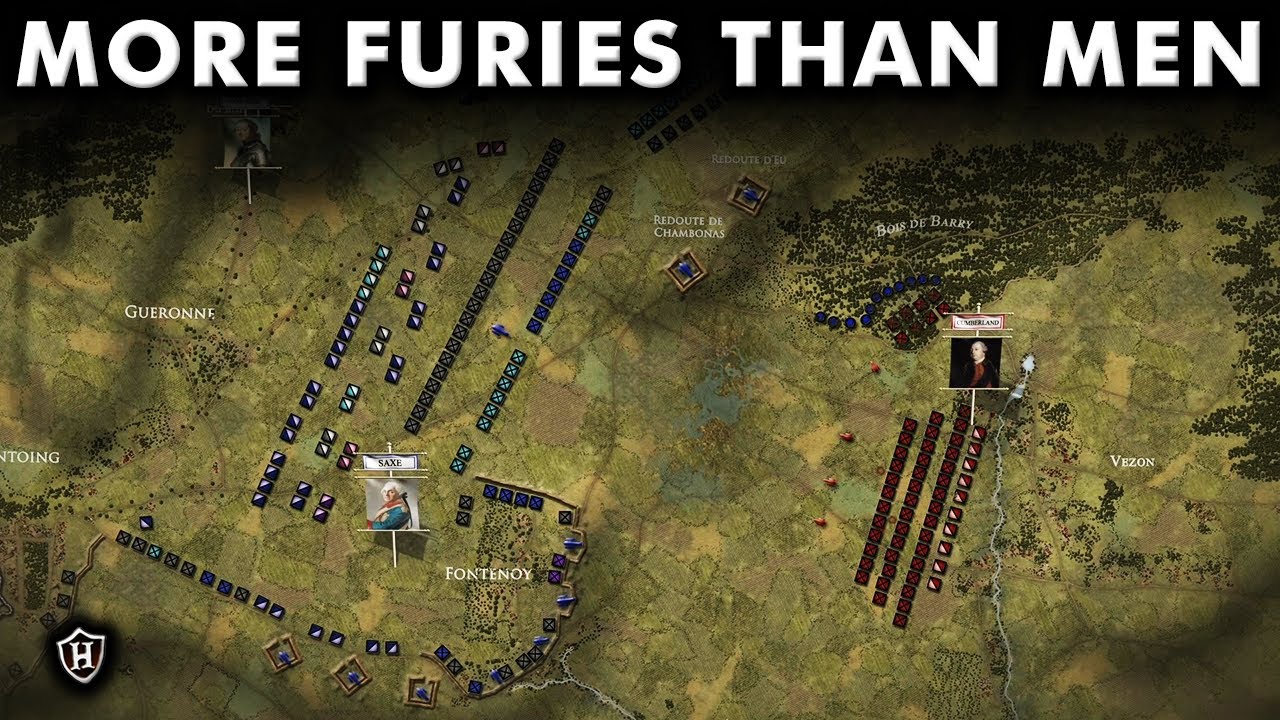Battle Of Fontenoy, 1745 ⚔️ France Vs England In The War Of The Austrian Succession
Unleash Your Creative Genius with MuseMind: Your AI-Powered Content Creation Copilot. Try now! 🚀
In the annals of history, there are moments that echo with the resounding footsteps of courage, moments when ordinary individuals rise to extraordinary heights. The Battle of Fontenoy is one such tale, where valor and determination transcended the chaos of war, leaving an indelible mark on the pages of time.
A Fractured Formation
As the Dutch regiment of Waldeck found itself battered and disoriented, a gaping hole tore through the Dutch ranks. Despite the relentless French artillery and musket fire, the Dutch soldiers valiantly pressed onward. After an hour of courageous assault, they eventually withdrew to regroup. A second Dutch charge met a similar fate. Meanwhile, the British forces, led by Cumberland, launched their attack on the French lines. They managed to overpower the French and Swiss troops, appearing to seize victory. The French morale teetered on the edge of collapse.
At this critical moment, King Louis XV contemplated yielding. What's worse, word arrived that the king was receiving advice to retreat to safety. Marshal Saxe hurried from the battlefield to inform the king of the situation. Marshal Noailles declared the battle lost, and he, along with several court advisors, urged the king and the Dauphin to withdraw swiftly beyond the Scheldt for their own safety. Upon hearing this news, Saxe was furious. He vehemently demanded that Noailles and the other advisors distance themselves from the king's entourage, reproaching them for their defeatist tendencies. King Louis himself emerged from the crowd and calmly asserted his decision to stand by Saxe and his army. Saxe turned his steed and declared, "We must all conquer or die," then returned to the battlefield.
The Steadfast Advance
On the front lines, the disciplined British infantry pressed forward with determination, shifting slightly to the left to evade the bothersome fire from the edge of Bois de Barri. They continued to fire upon the French center. The Aubeterre Regiment attacked their left flank in an attempt to slow their advance, but they were repelled by the deadly British musket volleys. Saxe advanced the Roi Regiment from Fontenoy, but they too were driven back by the heavy volleys of the British Foot Guards, suffering significant losses. The Hainault, Royal, and de Vaisseaux regiments were brought forward from the right to close the gap and restore the French line. While they managed to hold their position, they couldn't advance, as the continuous British fire decimated their ranks.
In a pivotal moment of the battle, Saxe ordered a cavalry charge. The British, hearing the thunderous gallop, pushed back their flanks and brought forward 3-pound cannons to hinder the French cavalry's advance. However, the cavalry charge didn't have the force Saxe had expected. This was due to Louis-Charles Le Tellier, Comte de Estrees, and commander of the Brigade de Royal Cravates, who failed to send his entire cavalry strength. He brought forward only four regiments, a mere 2,500 men, to attack the British. The cavalry regiments advanced at a trot, keeping their horses trotting to prevent them from tiring quickly. Once they reached 50 yards away, the British line unleashed hell. The French, unable to get closer and engage the British with swords, fired carbines and pistols as they turned. Two additional French cavalry regiments charged in to assist, but they met the same lethal British musket fire. The few riders who managed to force their horses closer were stopped by the muskets and bayonets of the 2nd Foot Guards.
The Unyielding Square
As the French cavalry charge couldn't break the British line, they had succeeded in halting the relentless advance. But as they pressed forward again, the British realized there wasn't enough space atop the hill to maintain their formation while advancing. The last obstacle to victory appeared to be two fresh lines of French cavalry in the center. However, as the allied formations advanced, their flanks and rear became increasingly exposed. At 12:30, Saxe decided it was time to counterattack. Gathering five shattered regiments that had managed to regroup, he ordered three to attack the west side of the Anglo-Hanoverian square, with two more attacking the north side. Positioned in narrow fronts, the French outnumbered the British, who had endured hours of artillery bombardment.
Saxe's final desperate effort was nearly foiled by Joseph de Randon, Comte d'Apcher, who led two cavalry regiments in a disorganized attack on the northwest corner of the allied formation. Four squadrons of the Noailles Cavalry Regiment pierced the line of the 3rd Foot Guards before charging at full speed into the Hanoverian reserves. The first squadron was literally mowed down, with only 14 survivors. Estree sent a cavalry brigade to protect d'Apcher's retreat, but this action blocked the Irish advance, causing confusion.
Cumberland, sensing uncertainty among the leaders, took charge and rallied the British forces. Despite their reduced formation and the threat of French artillery hitting their flanks and rear, the British advanced. It was a harrowing test of their mettle, where they refused to yield.

Related Recaps
- Ukraine War: Wagner chief accuses Russia of starving his fighters of ammunition
- Atiq Ahmed पर Asaduddin Owaisi ने कहा 'सपा - बसपा की राजनीति एक जैसी है'
- JMU Football - Players Postgame Press Conference vs. Coastal Carolina
- Thời sự an ninh ngày 27/3: Tăng cường hợp tác giữa Bộ Công an Việt Nam và Jica | ANTV
- PaLI-X: Vision+Language by Google